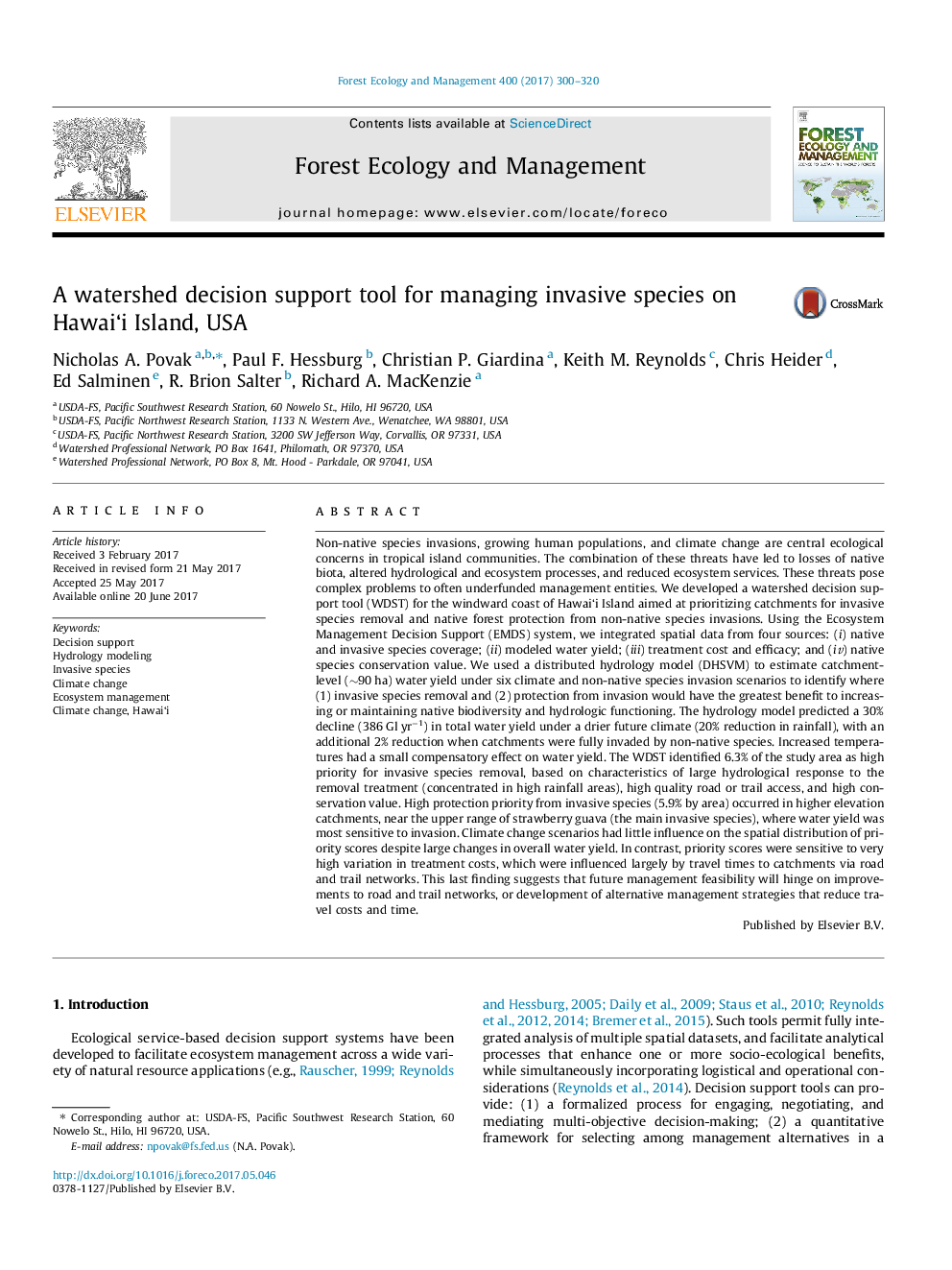| کد مقاله | کد نشریه | سال انتشار | مقاله انگلیسی | نسخه تمام متن |
|---|---|---|---|---|
| 6459249 | 1421358 | 2017 | 21 صفحه PDF | دانلود رایگان |
- Developed a decision support tool (DST) for forested watersheds on Hawai'i island.
- The DST targeted enhancing or protecting water yield by managing strawberry guava.
- Water yield modeled across several invasion and climate change scenarios.
- DST prioritization was similar across scenarios despite variability in water yield.
- We found limited access to high priority areas restricts current management goals.
Non-native species invasions, growing human populations, and climate change are central ecological concerns in tropical island communities. The combination of these threats have led to losses of native biota, altered hydrological and ecosystem processes, and reduced ecosystem services. These threats pose complex problems to often underfunded management entities. We developed a watershed decision support tool (WDST) for the windward coast of Hawai'i Island aimed at prioritizing catchments for invasive species removal and native forest protection from non-native species invasions. Using the Ecosystem Management Decision Support (EMDS) system, we integrated spatial data from four sources: (i) native and invasive species coverage; (ii) modeled water yield; (iii) treatment cost and efficacy; and (iv) native species conservation value. We used a distributed hydrology model (DHSVM) to estimate catchment-level (â¼90 ha) water yield under six climate and non-native species invasion scenarios to identify where (1) invasive species removal and (2) protection from invasion would have the greatest benefit to increasing or maintaining native biodiversity and hydrologic functioning. The hydrology model predicted a 30% decline (386 Gl yrâ1) in total water yield under a drier future climate (20% reduction in rainfall), with an additional 2% reduction when catchments were fully invaded by non-native species. Increased temperatures had a small compensatory effect on water yield. The WDST identified 6.3% of the study area as high priority for invasive species removal, based on characteristics of large hydrological response to the removal treatment (concentrated in high rainfall areas), high quality road or trail access, and high conservation value. High protection priority from invasive species (5.9% by area) occurred in higher elevation catchments, near the upper range of strawberry guava (the main invasive species), where water yield was most sensitive to invasion. Climate change scenarios had little influence on the spatial distribution of priority scores despite large changes in overall water yield. In contrast, priority scores were sensitive to very high variation in treatment costs, which were influenced largely by travel times to catchments via road and trail networks. This last finding suggests that future management feasibility will hinge on improvements to road and trail networks, or development of alternative management strategies that reduce travel costs and time.
Journal: Forest Ecology and Management - Volume 400, 15 September 2017, Pages 300-320
